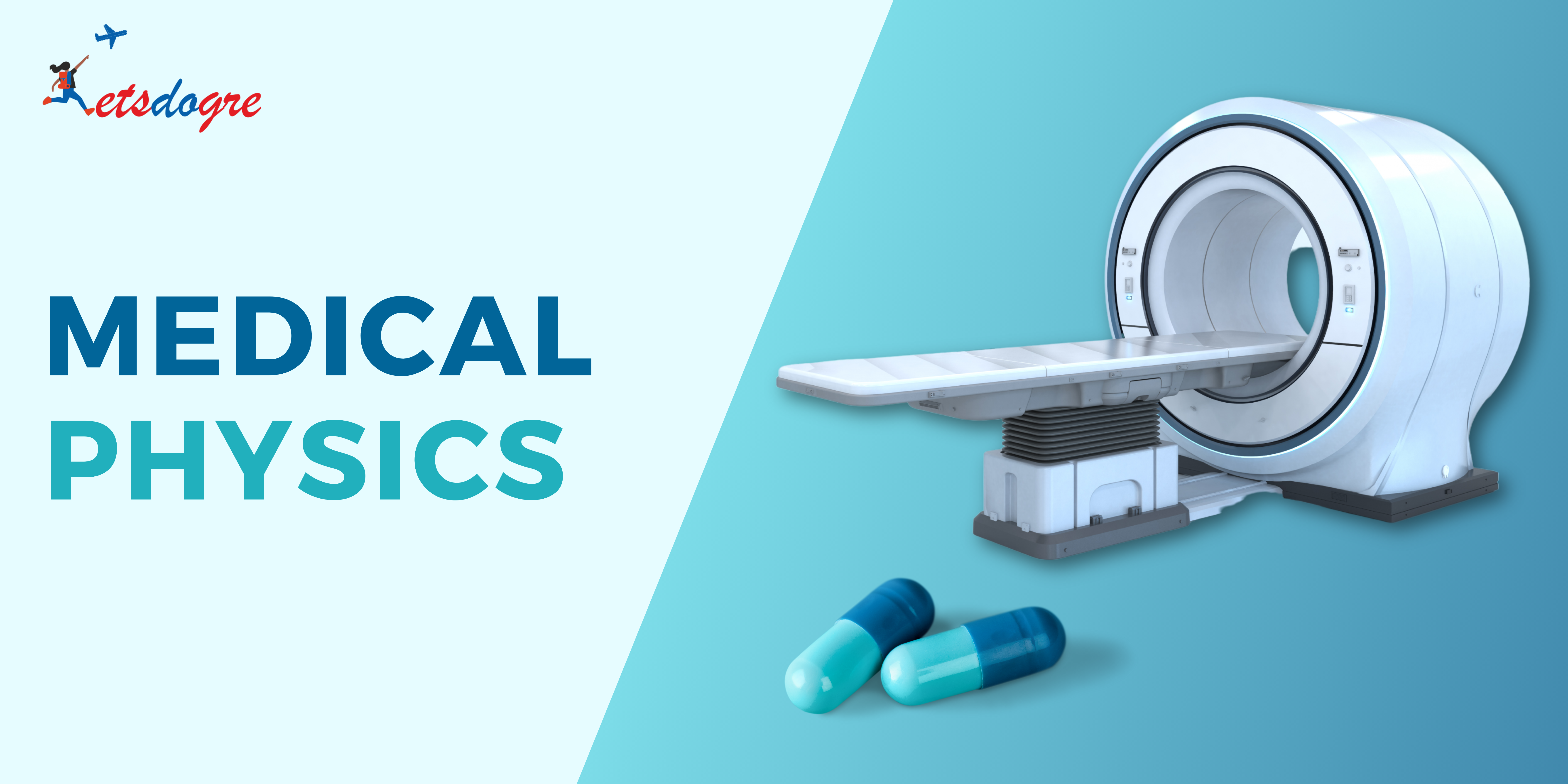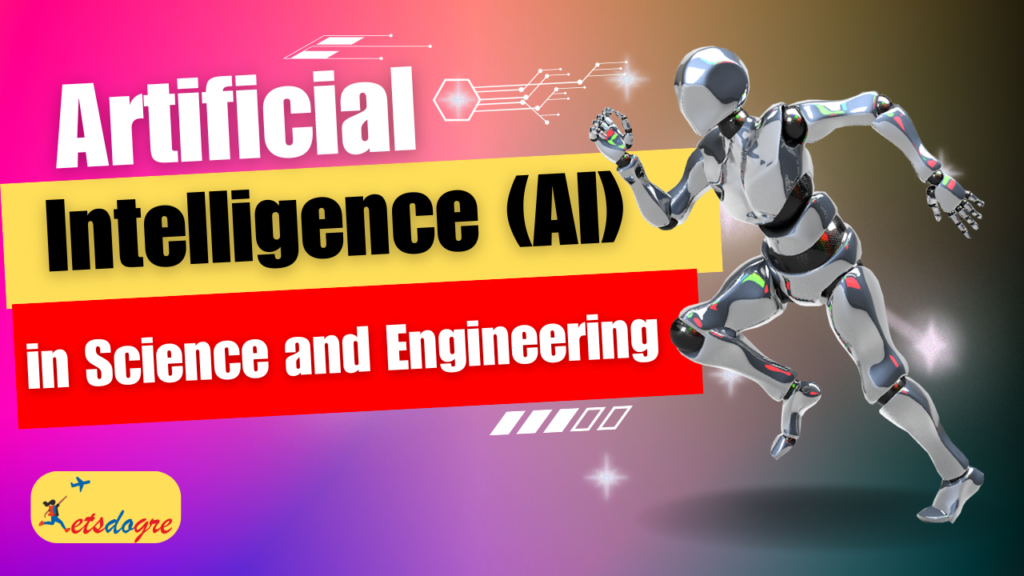
- April 19, 2024
- 4:48 am
-
Views: 308
Medical Physics
What is Medical Physics?
In healthcare, the application of physics principles plays a crucial role in enhancing diagnosis, treatment, and patient safety. Medical physics course is a specialized course that focuses on the utilization of physics in medicine, spanning diagnostic imaging techniques to radiation therapy. This article delves into the scientific validation of medical and health physics, the significance of research in this domain, and the opportunities available for those interested in pursuing a Ph.D. in this field.
Why Study Medical Physics?
Studying medical physics not only offers numerous benefits and opportunities but also provides a deep understanding of the principles of physics as they apply to medicine and healthcare. This understanding allows for the development and application of advanced technologies and techniques in medical diagnosis, treatment, and imaging, offering a unique opportunity for personal growth and intellectual stimulation.
Moreover, a Ph.D. in medical physics can play a crucial role in improving patient care and outcomes. By enhancing the accuracy, safety, and effectiveness of medical procedures such as radiation therapy, medical imaging, and nuclear medicine, you can make a significant and tangible difference in people’s lives, inspiring a sense of purpose and fulfillment.
Furthermore, the career prospects in medical physics are not just rewarding; they are fulfilling. From hospitals to research institutions, government agencies to industry, the opportunities are vast. Professionals in this field are not just contributors; they are innovators, pushing the boundaries of healthcare technologies and making a tangible difference in people’s lives.

What is the recent research in Medical Physics?
The realm of medical physics is a dynamic one, constantly pushing boundaries and exploring new frontiers. Building upon the core principles of radiation physics and its applications in healthcare, researchers are delving into exciting new areas that promise to revolutionize medical diagnosis and treatment. Here’s a glimpse into some of the cutting-edge research areas in medical and health physics:
Artificial Intelligence (AI) in Medical Physics:
Machine learning algorithms are transforming the field of medical physics.
Treatment Planning Optimization: AI can analyze massive datasets of patient scans and treatment plans, suggesting more efficient and personalized radiation therapy approaches for improved tumor targeting and reduced side effects.
Image Reconstruction: AI algorithms can enhance image quality in diagnostic imaging modalities like CT scans and MRIs, leading to more accurate diagnoses and earlier disease detection.
Predictive Analytics: AI can be used to predict potential complications arising from radiation treatment, allowing for personalized treatment plans and proactive management of side effects.
Advanced Radiation Therapy Techniques:
Researchers are exploring novel radiation therapy approaches to enhance treatment efficacy and minimize side effects:
Proton Therapy: Protons offer a more targeted form of radiation compared to X-rays, minimizing damage to healthy tissues surrounding the tumor. Research is ongoing to improve the affordability and accessibility of proton therapy for cancer patients.
Hadron Therapy: Hadron therapy utilizes heavier charged particles like neutrons or carbon ions for highly localized cancer treatment. Research is focused on optimizing treatment planning and developing advanced delivery systems for hadron therapy.
Nanoparticle-based Radiotherapy: Nanoparticles loaded with therapeutic radioisotopes can be targeted directly to cancer cells, enhancing tumor cell destruction while minimizing damage to healthy tissues.
Medical Robotics in Radiation Therapy:
Robotics is playing a growing role in radiation therapy with:
Robotic Treatment Delivery Systems: Robotic arms offer greater precision and flexibility in targeting tumors with radiation beams, minimizing human error and allowing for more complex treatment plans.
Image-Guided Radiotherapy (IGRT): Robotic systems can be integrated with imaging modalities to track tumors and adjust radiation beams in real time during treatment, ensuring accurate targeting despite patient movement.
All about Ph.D. in Medical Physics:
Education Qualification for pursuing a Ph.D. in Medical Physics in the USA
Applicants need a Bachelor’s degree in physics, engineering, or a related field from an accredited institution.
Application Requirement for pursuing Ph.D. in medical Physics in the USA
- Statement of Purpose: Write a statement of purpose outlining your research interests, career goals, and reasons for pursuing a Ph.D. in medical physics. Tailor your statement to each program and highlight your alignment with their faculty and research areas.
- Personal Statement: Write a personal statement that provides insight into your background, experiences, and motivations for pursuing graduate study in medical physics. Discuss any personal challenges, achievements, or experiences that have shaped your academic and career aspirations.
- Curriculum Vitae: Provide a CV or resume detailing your academic background, research experience, relevant coursework, publications, presentations, awards, and professional experience.
- Academic Statement: Prepare an academic statement that outlines your academic background, including relevant coursework, research experience, and academic achievements. Discuss how your academic experiences have prepared you for doctoral study in medical physics and highlight any specific research interests or goals you hope to pursue during your Ph.D. program.
- Research Experience: Highlight any research experience you have, including internships, projects, publications, or presentations in medical physics or related fields.
- Letters of Recommendation: Obtain letters of recommendation from professors, employers, or professionals who can attest to your academic abilities, research experience, and potential for doctoral study.
- English Proficiency: International applicants may need to demonstrate English proficiency by submitting scores from tests such as the TOEFL (Test of English as a Foreign Language) or IELTS (International English Language Testing System) unless they have completed a degree at an English-speaking institution.
- English Proficiency Waiver: If you believe you qualify for an English proficiency waiver, provide supporting documentation or explanation as required by the program. Waivers may be granted for applicants who have completed degrees or extensive coursework in English-speaking institutions or who are native English speakers.
Research areas related to Medical Physics:
- Radiation Therapy Optimization
- Diagnostic Imaging Techniques
- Radiation Dosimetry and Safety
- Nuclear Medicine
- Biomedical Optics and Photonics
- Radiation Protection and Shielding
- Medical Device Development
- Biological Effects of Radiation
- Radiation Oncology Physics
- Radiation Biology and Radiobiology
Some US Universities offering Ph.D. in Medical Physics
Vanderbilt University
Georgia Institute of Technology
University of Wisconsin
University of Chicago
Duke University
University of Nevada
Washington University
University of Buffalo
Wayne State University
University of Miami
Careers after a Ph.D. in Medical Physics
- Clinical Medical Physicist
- Research Scientist in Medical Physics
- Assistant Professor of Medical Physics
- Medical Physics Consultant
- Radiation Therapy Physicist
- Senior Medical Physicist
- Medical Device R&D Engineer
- Health Physicist
- Imaging Informatics Specialist
- Regulatory Affairs Specialist in Medical Devices
INDEX
Have Any Query?
Frequently Asked Questions
Scholarships for a Ph.D. in medical physics in the USA can vary depending on the university, program, and individual eligibility. Some potential sources include institutional scholarships, external grants from organizations like the Graduate Teaching Assistantship (GTA), American Association of Physicists in Medicine (AAPM), federal funding through agencies like the National Institutes of Health (NIH) or the National Science Foundation (NSF), and private foundations or industry sponsors. It's advisable to explore each option thoroughly and check eligibility criteria and application deadlines.
To enhance your chances of being accepted into a Ph.D. program in medical physics, focus on strengthening your academic background in physics, mathematics, and related fields. Obtain relevant certifications or licenses, such as those in radiation safety. Secure strong letters of recommendation, and prepare a compelling statement of purpose outlining your research interests and career objectives.
Completing a Ph.D. in medical physics in the USA typically takes 4 to 6 years, although this can vary depending on factors such as the specific program, research progress, and individual circumstances. The program often involves coursework in medical physics, research rotations, dissertation work, and possibly clinical training if it includes it.
Medical physics plays a crucial role in the hospital setting by ensuring the safe and effective use of radiation in various medical procedures such as diagnostic imaging (X-rays, CT scans, MRI) and radiation therapy for treating cancer. Medical physicists are responsible for calibrating and maintaining imaging equipment, optimizing imaging protocols to minimize radiation exposure to patients and staff, and providing quality assurance to ensure accurate treatment delivery in radiation therapy.
An example of medical physics is the development and implementation of advanced imaging techniques such as positron emission tomography (PET), which allows for non-invasive visualization of biochemical processes in the body. Medical physicists are involved in optimizing PET imaging protocols, ensuring image quality, and interpreting results to aid in diagnosis and treatment planning for conditions such as cancer, neurological disorders, and cardiovascular diseases.
Shortlisting universities before applying for a Ph.D. program is important because it allows you to identify programs that align with your research interests, career goals, and personal preferences. Factors to consider when shortlisting universities include faculty expertise and research opportunities, program reputation and accreditation, available resources and facilities, geographic location, financial aid options, and campus culture.
After pursuing a Ph.D. in medical physics, career opportunities are available in various sectors, including academia, healthcare institutions (hospitals, clinics), government agencies (such as the FDA, NIH, NRC), industry (medical device companies, pharmaceutical companies), and research institutions. Potential roles include medical physicist, radiation oncologist, imaging scientist, research scientist, regulatory affairs specialist, and consultant in areas related to medical imaging, radiation therapy, nuclear medicine, and radiation safety.





